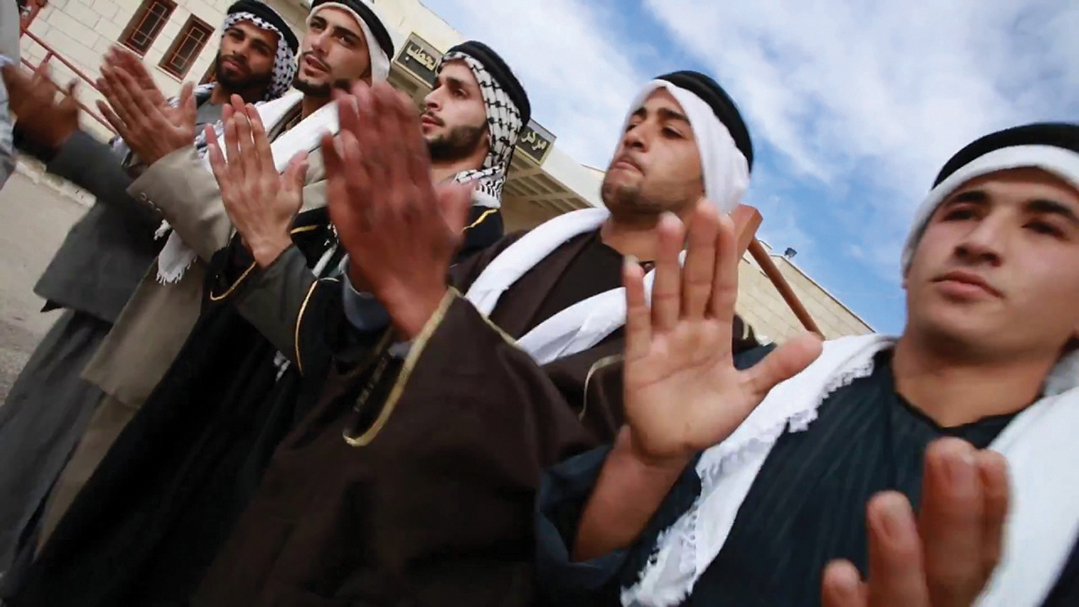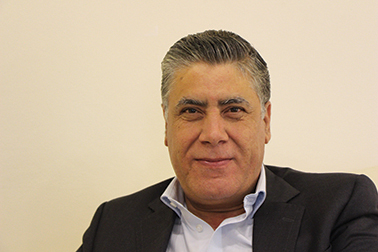Dehya is a Bedouin folk dance that traditionally was performed by male dancers both at rituals prior to wars – to encourage and inspire warriors for the upcoming fight – and when coming back from battle – to tell stories of bravery and adventure. Dancing with swords and other various types of weapons developed into a tradition common at wedding celebrations and other festivities across the Middle East and throughout history, and dehya continues to be performed at weddings and other special events today.
Frequently, the dancing is used by a performer to show off his skill in telling stories about battles, love of homeland, pride, happiness, and even flirtation. Dancers form two rows that move opposite each other. As they clap their hands based on the rhythm of a poet who narrates verses, dancers repeat the verses of the poem, harmonize their movement and breaths, and compete with each other in special movements performed in the space between the two rows. Dancers jump high and low, they wield a sword, stick, or piece of fabric in swirling motions above their heads, they twist and turn before rejoining the group. The dehya poet is called bada’ (creator) while the dehya is called bida’a (poetry created).
Although dehya had disappeared for a few decades from Gaza, being performed mainly at few occasions and within a handful of families, it has become very popular again during the past five years. In fact, dehya has spread like wildfire in Gaza and among the Palestinian community in general. Today, Palestinians enjoy listening to dehya whether they are Bedouins or not. In Gaza, you can see and hear many taxi drivers and private cars listening to and singing dehya on the road. The uniqueness of dehya’s music and lyrics lies in their being derived from reality, they are close to the hearts of the listeners in ways and to an extent that both men and women, old and young enjoy.

Contemporary dehya has evolved to include music alongside a poem. At weddings, poems are improvised to welcome the bride, groom, and guests. Sometimes, social and political issues are addressed, possibly with a tonguein-cheek type of humor. But, despite the changes, and even though it is now performed by various segments of Palestinian society, dehya still has its distinctly Bedouin flavor. Along with other traditional songs and dances, dehya continues to exist in the Gaza Strip, in the midst of the ongoing suffering, the closure, wars, poverty, unemployment, and hardship. Dehya is another indication for the fact that Gaza’s population remains resilient, searching for moments of love and happiness.


